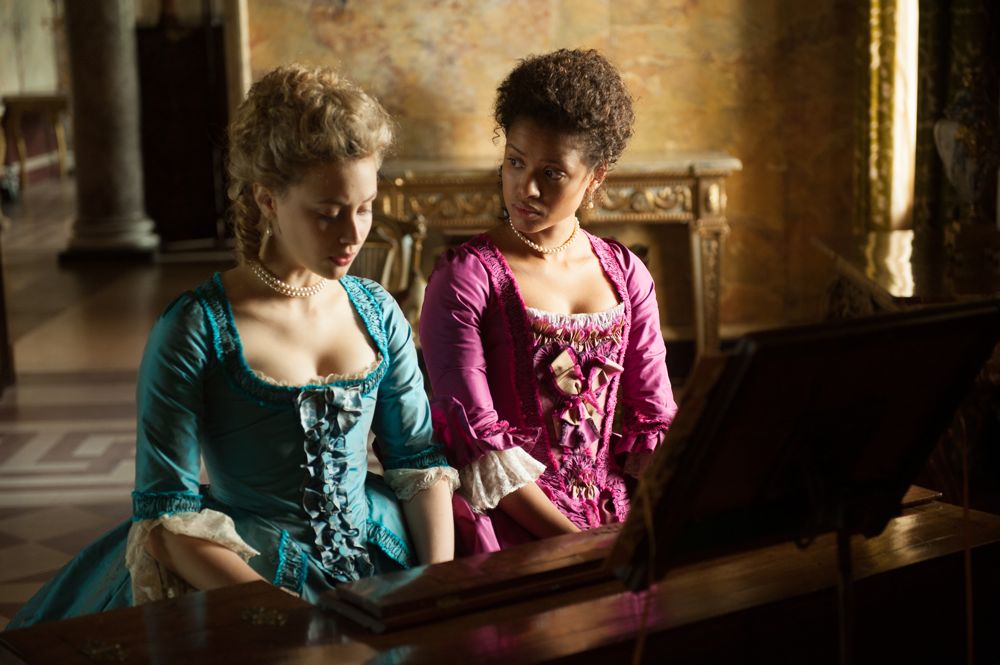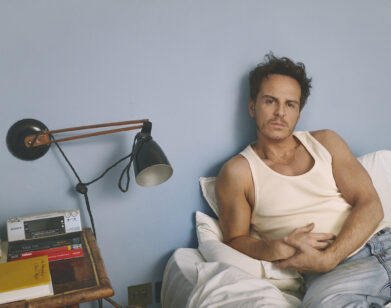The Belle of The Athena Film Festival
It is difficult to imagine a more appropriate opening night film for this past weekend’s Athena Film Festival than Belle.
Directed by Amma Asante, astounding is the only word to describe Belle: astounding that it was directed by a second-time filmmaker; astounding that what looks like a $250 million film was made for under $10 million, and, most of all, astounding that it is based on a true story.
Belle is an elegant, visually lavish banquet, exacting and lyrical in its period detail. The film depicts the real-life saga of Dido Elizabeth Belle, whose mother was a slave and father was a Royal Navy admiral (played in the film by Matthew Goode). Raised by her uncle, Lord Mansfield, England’s Chief Justice (the superb Tom Wilkinson), issues of race, gender, and politics converge as Dido, who has led an aristocratic, sheltered life, confronts the difficulty of finding a husband from her social class who wants to marry a mixed-race young woman in 1799. While engaged to a racist suitor but yearning for the vicar’s son, who truly loves and respects her, Dido is determined to win justice during an insurance fraud trial for slaves who were murdered as “human cargo” on the Zong slave ship—which ultimately leads to the end of slavery in Britain. Gugu Mbatha-Raw’s Dido is graceful, fiercely intelligent and passionately driven—embodying the Athena Film Festival’s ideals of female strength and leadership.
British filmmaker Amma Asante had previously directed one contemporary indie, A Way of Life, in 2004, winning several individual festival awards, along with a BAFTA award for a directorial debut. Belle, which premiered at the Toronto Film Festival last September, will be released by Fox Searchlight in theaters on May 2.
LORRAINE CWELICH: How does Belle embody the goals of the Athena Film Festival?
AMMA ASANTE: I think Belle fits so well with the themes of Athena because it’s a strong female exploring identity, her place, finding her own value, not letting anybody define who she is. In many ways, what Athena inspires us to do as women is what Gugu expresses to us as Dido. Her role empowers women by saying, don’t let a culture or society’s rules define who you are; you define who you are. For Belle to be the opening film at the Athena Film Festival was a privilege and an honor for me. It was such a great partner because every one of its ideals fits in with who I am as a filmmaker and the kind of stories I want to tell and characters I want to build as a filmmaker.
CWELICH: Was the film first picked up at Toronto?
ASANTE: It was produced independently by Damian Jones. Then it was picked up before Toronto, in June. We finished the film in May and then did screenings in New York and L.A. for distributors and then Fox Searchlight picked it up.
CWELICH: How was an independent filmmaker on a limited budget able to create such a sumptuous and historically authentic environment?
ASANTE: Damian sent me the postcard of the [18th century] portrait [of Belle and her cousin]; that’s how it first came to me. From the portrait, I started to do lots of digging and research. I took everything from the portrait—the relationship between Dido and Elizabeth, the colors, the world I wanted to set her in. I imagined and extended the world beyond the portrait. So I knew I wanted to make a movie that looked decadent and expensive. I knew we would have to make every penny stretch and put as much of the budget onscreen as possible. So it starts with your heads of departments—your production designer, costume, hair and makeup designers. Picking the right people who were as committed as I was to telling this story as I was.
CWELICH: Tell us about the locations and production design.
ASANTE: It was shot in London, the Isle of Man, and Oxford. We had to piece together their world. Kenwood House, Dido’s original house, was made up of five houses, and the later house in London was actually comprised of three houses. I wanted Dido and Elizabeth to feel dwarfed at the beginning, to be living in the countryside like little girls in a giant dollhouse, to represent their innocence and the idea that they were protected from the harsh realities of the outside world. As the scales fall from their eyes, if you like, and they learn more about what it is to be a woman, and a woman of color, what it is to be second-class, in so many ways—where you have to be chosen and validated by the husband you have—I wanted their worlds to be more sophisticated, with less pastel colors, darker, richer colors, lower ceilings. I wanted their exterior world to reflect their interior journey. I wrote out a document for [department heads] and had a mood board.
CWELICH: Tell us about your first film, A Way of Life.
ASANTE: It was set in modern day and also had a female protagonist. It dealt with similar themes. It was about a teenage mother who becomes involved in the accidental murder of her neighbor. It was a tough, emotional film. Like Belle, it had a lot of pathos but was also funny. It too dealt with issues of race, gender, and class.
CWELICH: In the intervening years, were you working on other projects or focused on developing Belle?
ASANTE: Belle didn’t come to me until 2009. Before that, I had three projects, one of which I will go into production with next year. I’m working on a Warner Brothers film next, Unforgettable, and then after that, I’ll do my third indie. Before Belle, I’d been writing three films, all of which collapsed within three months in 2009, right at the beginning of the recession. One of them was a Jane Austen adaptation which had never been done before, Lady Susan. With my next indie, which is set in 1940s Berlin, it was announced in Cannes that it was about to go into production and then the financing collapsed, so it went into turnaround. So thankfully I now have the financing for that movie for 2015.
CWELICH: What is Unforgettable about?
ASANTE: I just signed on for it about a month ago. It’s a double female lead, a story about a man who’s divorced—on his second marriage—trying to negotiate the life of his first wife and his second wife. The first wife goes slightly crazy and tries to kill the second wife. There are huge A-list names possibly attached, which I can’t announce yet, but am completely honored to work with.
CWELICH: You mentioned Jane Austen, which is interesting because Gugu’s performance reminded me of Keira Knightley’s performance as Elizabeth Bennet in Pride & Prejudice—romantic, elegant, headstrong, and spirited.
ASANTE: Absolutely, I was hugely inspired by Pride & Prejudice. Belle is actually my homage to Jane Austen, who I think is one of the most incredible female novelists we’ve ever had. For all the love she gets, I still don’t think she’s recognized enough for exploring the middle-and-upper class female experience in 18th-century England.
CWELICH: What personally resonated with you about Dido’s story and compelled you to make this film?
ASANTE: The history, 100 percent. We had a painting and the history, and I spent three years in development to make sure that we could do justice to Dido’s incredible story and weave all the issues seamlessly to reflect Dido’s journey from girl to woman, to reflect her political awakening and her transformation from a girl who said, “as you wish, sir” to a woman who says, “as I wish.” It was also about honoring the girl next to her [her cousin, Elizabeth], looking at her with such love, and also honoring Lord Mansfield, the man that was courageous enough to commission that painting at a time when it was completely unheard of.
BELLE OPENS IN THEATERS MAY 2.







